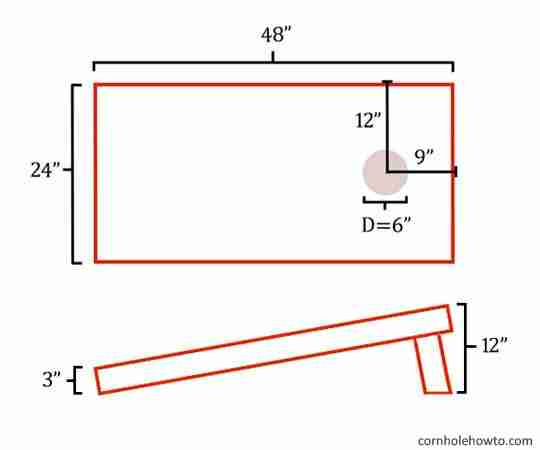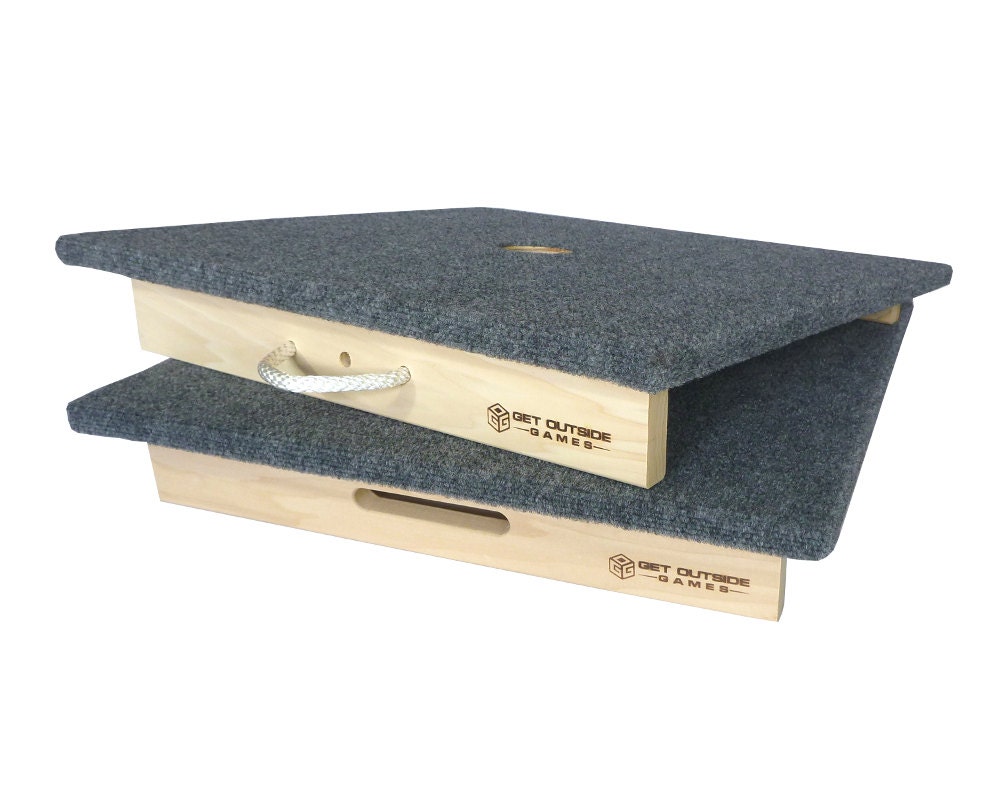

Lift the deck and apply wood glue to the top edge of each frame piece and set the plywood deck back in place. Step 4: Position the frames Photo by Wendell Webberįor each deck: Set the frame pieces in place so that the short ends sit inside the long sides, and then lay the plywood deck on top, using the deck's square corners to adjust the frame pieces until they are square. Drill a hole through your compass pivot with a ¼-inch bit. Use that mark as the pivot for your compass, set at a 1¾-inch radius, and draw a half-circle that intersects with the top edge. To outline each leg's rounded-off corners, draw a line parallel to, and 1¾ inches below, the top edge measure and mark the center of that line. Saw the 2x4 side and end frame pieces and legs to length according to the cut list. Step 3: Cut 2x4 frames and legs Photo by Wendell Webber Drill a hole, and then cut out the circle in that piece. Stack the two sheets of plywood together, and use the cutout to trace the circle for the second sheet. Drill a hole anywhere inside the circle for the jigsaw blade, and then use the jigsaw to cut out the circle. Plant your compass point there, and draw a circle with a 3-inch radius. On a 24-by-48-inch piece of ½-inch furniture-grade plywood, mark a spot 8⅞ inches from the top and centered 12 inches from each side. Step 2: Outline and cut out the holes Photo by Wendell Webber But don't let a quick run of the jigsaw stand between you and a rousing game of cornhole at your next barbecue. (You can source beanbags from .) The only challenge may be rounding off the corners atop the legs so they don't catch the frame when you fold them flat. The 2x4 frames couldn't be easier to assemble, and the 24-by-48-inch plywood sheets needed for each deck are a stock size available at most home centers-be sure to grab furniture-grade veneer to provide a nice slippery surface for the bags. Ours are regulation boards as specified by the American Cornhole Organization, but the carrying handles and, of course, the price make the TOH version a clear winner. Step 1: Overview to Build Cornhole Game Boards Photo by Douglas Adams As for your poor aim? Nothing a few well-chosen teammates can’t overcome.
#1 HOLE WASHER BOARD GAME DIMENSIONS HOW TO#
This Old House’s experts, aka Team Saturday, will teach you how to build a cornhole set in the video tutorial above. How to Make a Cornhole Game Set in 10 Steps Refer to the official rules for the game of cornhole. ½-inch birch-veneer plywood: two at 24 by 48 inches.But why pay hundreds of dollars for game boards adorned with your feeble alma mater when you can proudly go DIY by making high quality ones with birch plywood and 2x4s? It's easy to see why it's become such a barbeque favorite: You can hold a beverage in one hand and loft your beanbag with the other. A player may only lose 1 point this way per turn.Cornhole is everywhere! The backyard beanbag-toss game that caught fire in the Midwest now boasts its own association, Wikipedia entry, and myriad online purveyors. If the player misses the top of the board then they go back to 20. If a player scores 21 and has washer/s in hand he must throw the remaining washers and hit the top of the board. This win may be washed by the opponent doing the same, stacking on the board or scoring 21. This is where a player throws a washer in each of the three holes to win the game. A stack is also counted if all three washers are in the same hole.ġ,3,5 win.

If a players washers form a stack on the board it is a automatic win, unless the other player does the same or scores 21, then the stack is "washed" and score stays the same. If a player throws and scores more than 21 points they "bust" back to 13. Player two "washed" 4 of player one's points. For example if player one score 4 points then player two scores 5, player two gets 1 point. If both players score the same amount of points no points are awarded. This means that after both players trow their washers the lower score is subtracted from the higher one. The object is to score 21 points first and win the game. Teams would split up one on each end of the boards. After both players have thrown, the player with most points throws first from the opposite board. Players take turns throwing all 3 washers consecutively. The first hole is worth 1 point the middle 3 points and the farthest worth 5 points. Two players start by throwing three washers each from the same side of the board.


 0 kommentar(er)
0 kommentar(er)
